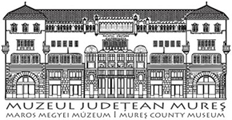Marisia - Maros Megyei Múzeum Évkönyve 32/2. (2012)
Articles
162 Zs. Nyárádi handles, indented rims, made on slow potter’s wheels, dating back to the late period of the Árpád dynasty (PI. 5/11-13). The extended choir, closing in multiple angles was already built without any supporting columns, maybe during the late gothic period. The church, which is facing east, has northern walls rising 40-50 cm above what was their contemporary floor. Archaeological observations suggest that this phase of the church had not been in use for long. This is supported by the fact that its floor had not been dug up for graves, and by the fragments of plaster whitewashed once or twice, collected from the debris. We did not find any trace of the church’s vestry. Earlier artefacts, as well as the coloured fresco fragments and different kinds of chunks of mortar suggest the existence of an earlier phase. This observation is clearly supported by the excavated section of the cemetery. Inside the church, at a depth of only 20-50 cm, a total number of 30 medieval graves were uncovered (PI. 2/4). The shallow depth of the graves already implied, confirming the stratigraphic observations that these belonged to a period other than the one we were focusing on. Furthermore, we found small fresco fragments and pieces of mortar, different from the ones found in the choir’s wall segments, inside the grave filling, which was direct evidence of an earlier church. The shallow depth at which the graves were located has led to great damage in the bone material. Firstly, ploughing which disturbed the graves, and secondly the winter frost lead to the uncovered burial site being in very poor condition. The large quantity of scattered bones pointed to a large number of graves being destroyed. Studying the filling of the graves we saw that many of them were cut through by elements of the church’s structure, as they contained chunks of mortar, and brick fragments. The fillings of graves 7, 13, and 17 were relatively clean, and these are supposedly among the earliest ones. Numerous graves (5,25) also contained fresco fragments, which maybe connected to a renovation or reconstruction. At the same time, these are also the latest of the excavated graves. The orientation of the graves is roughly the same, with the exception of grave number 21 which sits in a north south direction, 40 degrees off in comparison to the others. On top of it however, there is another grave which is also facing east (grave 20) and as such, from the point of view of their origin, the difference between their positions may be overlooked in this case. In most cases, the deceased were buried with their arms placed stretched out, or slightly bent alongside the body, but there were also cases when the left arm was stretched out while the right one was placed over the pelvic region (grave 10). In a few graves their arms were locked together over the pelvic region (grave 11). Only very few traces of coffins were observed, traces of wood were found only in grave number 5 but no coffin nails were found in any of the graves. In the case of grave number 17 considerable traces of charred organic material were found which suggests that the body was wrapped in some sort of material. Clear traces of a shroud only in the case of grave number 15 could be noticed, where during the collecting of the bones, the dark brown remains of charred organic material under the skull were observed. In the case of graves 12 and 16 the remains of two children were buried with their arms clasped together (PI. 4). Based on the artefacts recovered and the annexes of the graves, the foundation of the cemetery may have taken place between the 13th—14th centuries. In the south western corner of trench number 1, in the soil covering the grave, we found 8 hair rings in secondary position (Pi. 5/1-8). Two of them are made of copper and have ribbed endings. The other six are made of bronze, four of which have smooth S-shape endings while the remaining two have ribbed endings. Because we found them all in the same place, we suppose they were belonged to the
